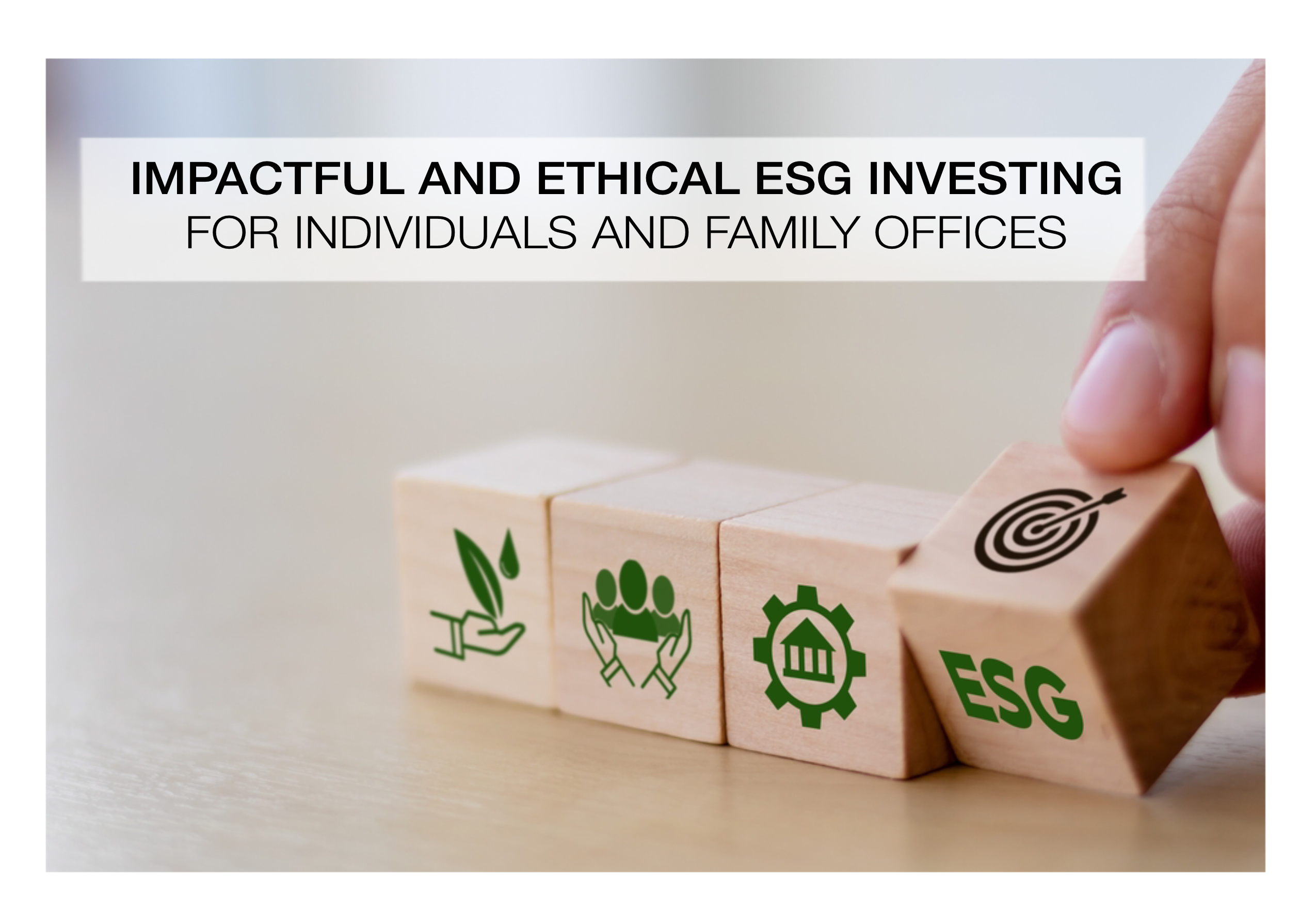As individual investors and family offices become increasingly socially conscious and environmentally aware, many have turned to “ethical” investing. But what does that mean?
We wrote in March 2021 and again more recently, “ESG,” the acronym for “environmental, social and governance,” is intended to guide “ethical” practices and showcase for investors how companies are conducting their business to be more socially aware and how they aim to be more environmentally conscious. Major media outlets, such as the Wall Street Journal (WSJ) have covered it as well.
How does ethical investing work? You’d tell your investment advisor you don’t want to invest in companies whose businesses trade in vices, such as tobacco, alcohol, weapons and slave labour, or even those whose business harms the environment, such as oil companies or other known polluters. We questioned whether such investing based on a company’s ESG was truly ethical investing, or whether investors were falling for “greenwashing,” where companies wear the cloak of ethical behaviour, but aren’t truly living up to their ESG proclamations.
As Gen X, millennial investors and heads of family offices embrace more socially conscious positions, where does truth blur into fiction? I would argue that while ethical investing had purpose, such strict guidelines meant sectors which had meaning were excluded. With ethical practices, how can we ensure that they are doing everything right. After all, we often don’t have full visibility. Whilst ESG had fewer of these decisions, in many cases, it is based on the hope the companies will follow through on their promises.
“ESG” investing platforms and portfolios were crafted so broadly as to serve all – to the point that some are little more than watered-down folly. It was about the “feel good factor” taken on face value.
What’s more, such companies can be lousy market performers. A recent Harvard Business Review article found that ESG funds perform poorly. Examining a study from the University of Chicago regarding Morningstar sustainability ratings of more than 20,000 mutual funds representing over $8 trillion of investor savings, it found that the highest-rated funds in terms of sustainability certainly attracted more capital than the lowest rated funds. However, “none of the high sustainability funds outperformed any of the lowest rated funds,” researchers from the University of Chicago found.
Institutional investors and asset managers are pushing back, as well. A divide has grown as to whether state pensions should invest based on ESG. The Department of Labor recently released a rule that may conflict with state efforts to consider ESG in state pension investments, notes the Wall Steet Journal.
What’s more, researchers at Columbia University and London School of Economics found in a survey of ESG funds that companies that added to ESG portfolios did not subsequently improve compliance with labour or environmental regulations. They called the findings “disturbing.”
Talk about “greenwashing.”
So, performance aside, how can we put meaning back into ESG.
It’s time for an investor epiphany of sorts. Aim to maximize your returns, while practicing thoughtful investing, ask yourself…
- What am I trying to achieve? Are you against all vice-related stocks, or just those you find most pernicious?
- What is your pain point? How much are you willing to leave on the table?
- How much are you willing to hold your advisor’s feet to the fire in finding you reasonable alternatives once all vice stocks have been removed?
- Are you willing to do some of the research yourself? Do you need a new advisor more versed and comfortable in ethical and ESG investing?
- How can you even measure a company’s commitment to ESG when compared to what’s on its ESG page on its website or in its annual report? Can you even trust what they’re presenting?
- Some are ESG compliant on paper, but are they as robust in their pursuit of ethical practices as they could be?
Maybe we need to look differently at the model and nomenclature. Forget “ESG” or “ethical” investing and pursue “impact” investing. What companies, industries or sectors are having the greatest positive impact on society and climate change. Companies that provide microloans to micropreneurs in underdeveloped nations around the world are driving tremendous, measurable change – one small business at a time. India, for example, has seen microloan programs change entire communities, one entrepreneur at a time. What about investing in Climate Resilience projects in universities, taking theory to reality, and potentially turning a profit.
That’s not to say a program like microloans is a panacea. Developing nations like India and smaller countries in Asia and Africa can be among the leading polluters. Are you comfortable helping a small business or entrepreneur in a country that cannot control its emissions?
In the end, you must do what you feel is best – for your portfolio, your family, your community, even your planet. If you need guidance sifting through the vehicles presenting themselves as ethical or socially conscious investments, let’s talk.

Leave A Comment